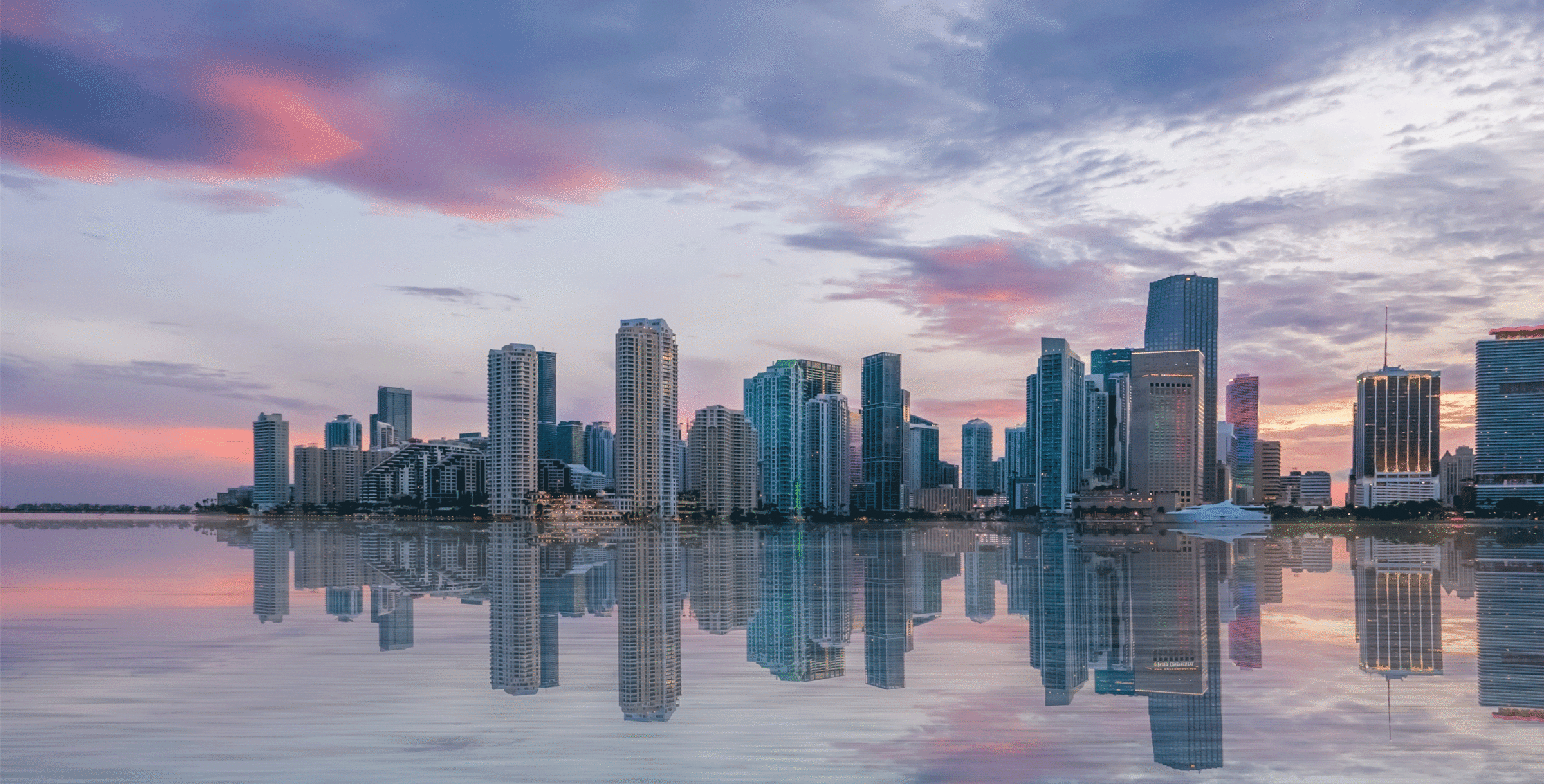As one of the most developed and heavily populated areas along our nation’s shoreline, South Florida is on the front lines of the fight against sea-level rise. Changes to our climate are impacting everything from where we build our homes and businesses, to the safety of our roads and drinking water, to the habitat upon which wildlife depend. How human communities respond to climate must take all of these considerations into account.
One of the most important tools available is “green infrastructure.” Where traditional infrastructure like seawalls or other coastal hardening options can be expensive and harmful to coastal ecology, green infrastructure is the practice of using natural features like reefs, marshes, mangroves and barrier islands (or engineered solutions that emulate them) to protect our communities from climate impacts.
On August 23, Audubon Florida, with funding from the Schumann Foundation, hosted “Highlighting Coastal Resiliency in South Florida,” an event to convene nearly 40 stakeholders to hear elected officials and experts discuss green infrastructure and its role in preparing South Florida for an unpredictable future of weather extremes.
It was no coincidence that the proceedings were surrounded by the critical commentary on South Florida’s rapidly changing ecosystem presented in James Prosek’s Contra Naturam/Against Nature Exhibit at the University of Miami’s Lowe Art. After a brief welcome by Audubon Florida Executive Director Julie Wraithmell, Audubon debuted a short film depicting the national science of coastal resilience and importance of green infrastructure.
“A seawall only provides one benefit – storm protection – and it provides that benefit only when a storm is approaching. Natural infrastructure, by contrast, is actually providing a host of co-benefits including habitat... it is providing these benefits all year round… and can keep pace with sea-level rise.”
-- Arianna Sutton-Grier, University of Maryland
A panel discussion followed the film, featuring comments from some of the region’s thought leaders and decisionmakers on climate change, including:
- Dr. Jennifer Jurado, Chief Resilience Officer and Director with the Environmental Planning and Community Resilience Division for Broward County;
- Dr. Tiffany Troxler, wetland ecologist, and Director of Science for the Sea Level Solutions Center and Research Faculty with Southeast Environmental Research Center at Florida International University;
- Dr. Jayantha Obeysekera, Mechanical Engineer and Director and Research Professor at FIU’s Sea Level Solutions Center;
- Miami-Dade County Commissioner Daniella Levine-Cava;
- State Representative Juan Fernandez-Barquin; and
- Jim Murley, Chief Resilience Officer for Miami-Dade County.
Each of the panelists was invited to share insights into the preparations underway and challenges ahead.
“Our population has more than doubled since 1980, and at the same time, our annual tourist visitation has grown six-fold,” prompted Wraithmell. “We need to use 21st-century solutions to meet 21st-century challenges,” she added, starting the conversation.
“Turnover [of residents and decision-makers] requires continuous education on the importance of the green infrastructure we have left,” said Murley.
Commissioner Cava was in agreement.
“Everglades restoration IS climate adaptation—it is essential for protecting our aquifer against saltwater intrusion,” she said, adding that Miami-Dade’s Office of Resilience staff is tasked with heavy lifts. As members of the Rockefeller 100 Resilient Cities and The Atlantic Council, the cities of Miami and Miami Beach, together with Miami-Dade County, are working toward an ultimate goal for 2030 of one billion resilient people.
While individual municipal governments address their own resilience challenges, Dr. Obeysekera emphasized these problems are regional. Aging or failing systems in some municipalities can negatively affect other systems in the region.
“We need a systems perspective for functionality and think beyond current design intent - a smart investment strategy must include science,” he concluded.
This sentiment was mirrored by Dr. Troxler, who confirmed that it is important to have routine, comprehensive, and interdisciplinary science in decisions to help us keep track of investments and determine when we achieve targets.
“More importantly,” she added, “it helps us anticipate issues during implementation.”
Models are never perfect and contain substantial uncertainty. However, that uncertainty is no excuse for inaction.
“We need adaptive pathways: a resilience plan needs to work for the long term,” said Dr. Obeysekera. “Plans must include space for adaptation because long-term solutions require natural infrastructure to move inland.”
One mechanism that allows for regional coordination and adaptive management in the face of uncertainty is the Southeast Florida Regional Climate Compact—an innovative regional partnership in which Jurado and Murley are instrumental. This compact idea has since spread to Southwest Florida, Tampa Bay, and Orlando where regional governments are banding together to respond to climate challenges.
Continuing as a thought-leader, Jurado announced that Broward’s next infrastructure improvement plan will look at ways to use the redevelopment process to build resilience across the landscape. This is now possible due to the 2017 implementation by the SE Climate Compact of a new reference map—the Future Conditions Wet Season Groundwater Table Map—which puts a spotlight on the two-foot rise in sea level anticipated by 2060. Jurado credited collaboration with the private sector with these encouraging results.
With large price-tags on everything related to adaptation, all of the panelists agreed that community support and involvement is critical, and the State of Florida is a very important partner in this effort.
“$625 million [for water funding in the Florida Legislature’s appropriation for 2019] is historic, but it is also only the start,” said Representative Fernandez-Barquin. “The need is great, and this Governor and Legislature are committed. Next year, we are hopeful for even more funding.”





